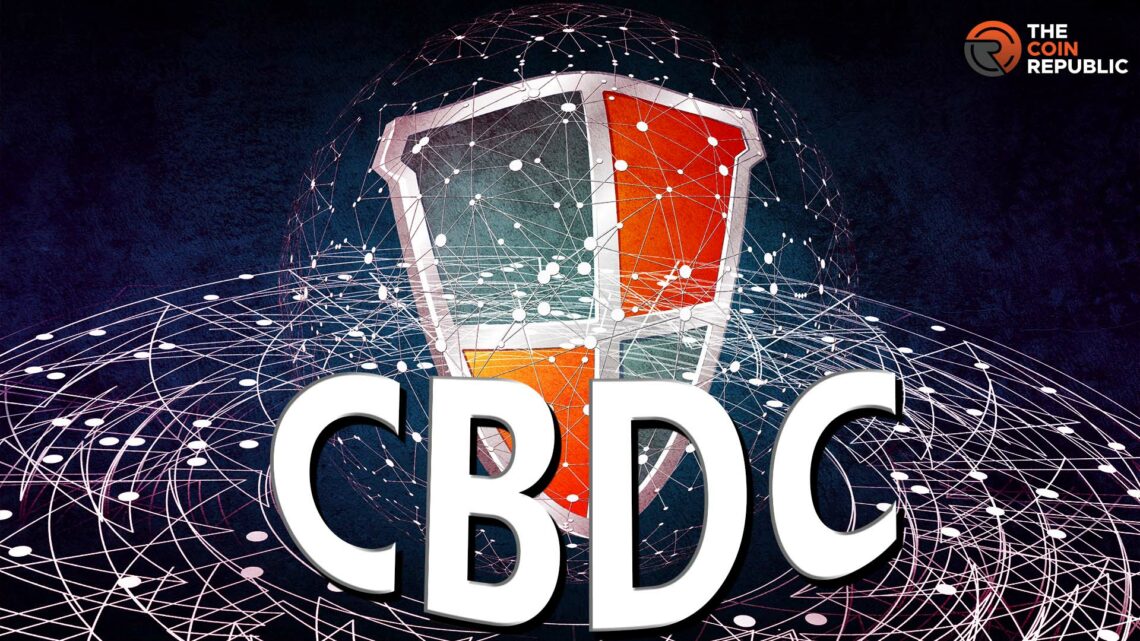- 1 A retail CBDC could contribute to a more competitive and innovative payment system.
- 2 The US recently witnessed the cratering of renowned banks.
The United States is to clarify its stance regarding the Central Bank Digital Currency (CBDC) rollout in future. In a recent conference held in Texas about FedNow and CBDCs, the Treasury department remarked that digital assets might become a liability for the central bank. Moreover, the agency is also working on assessment of its potential implications.
CBDC May Pose Risks Alongside Benefits
According to Graham Steel, Treasury’s Assistant Secretary for Financial Institutions, “A retail CBDC, unlike central bank reserves, would be a liability of the central bank that is accessible by the general public. A retail CBDC could contribute to a more competitive and innovative payment system; support financial inclusion; and help preserve the face value redemption of the currency.”
He explained CBDC may pose risks alongside benefits. Steel also highlighted that recent banking crisis have changed the nature and speed of bank runs. He cited a highly concentrated depositor base, banking turmoil, non-deposit alternatives outside the banking system and more as primary causes for such catastrophic events.
The nation recently witnessed the cratering of renowned banks including Silicon Valley Bank, Signature Bank and First Republic Bank. Experts believe that rising interest rates, uninsured deposits, scant supervision and other lapses led to such events. Some people called it a start-up bubble considering a majority of Silicon Valley Bank clients belonged to the category.
Some politicians are not in favor of implementing CBDCs in the U.S. Ron DeSantis, Florida Governor and 2024 presidential candidate, believes it is threatening to American citizens’ financial freedom. Additionally, he said that officials do not like the idea of crypto assets considering it threatens their power.
A Broader Adoption Has Began
China is among the leading countries to include central bank digital currency in their economy. WXRB, a Chinese news media, reported that the Municipal Mental Health Center in Wuxi, a city near Shanghai, became the first hospital to accept e-CNY. Another report shows officials in Jiangsu, a Chinese province near North Shanghai, collected street light bills via digital renminbi.
Harvesh Kumar Seegolam, Governor of Mauritian Central Bank, said during the International Monetary Fund (IMF) and World Bank Community of Central Bank Technologists meeting in April 2023 that they have established parameters for a CBDC pilot.
Thailand’s Central Bank recently announced a CBDC pilot in the country this month. The program will run through August 2023 with up to 10,000 participants taking part. Officials referred to the initiative as a ‘program to learn’ rather than a ‘program to launch.’ The country does not have any official plans to release a central bank digital currency.
The Central Bank of Brazil revealed they will begin assessment of CBDCs before enabling the launch. Furthermore, the bank officials say they want to understand the impact of blockchain and digital ledger technology. Several other countries are involved in CBDC development in some way.
The Atlantic Council’s CBDC tracker shows nations including Jamaica, Bahamas, Nigeria and 8 Eastern countries have launched CBDCs. 18 out of 20 Group of 20 (G20) nations are already at advanced levels of CBDC development, while all the Group of 7 (G7) countries are on the same level.
Anurag is working as a fundamental writer for The Coin Republic since 2021. He likes to exercise his curious muscles and research deep into a topic. Though he covers various aspects of the crypto industry, he is quite passionate about the Web3, NFTs, Gaming, and Metaverse, and envisions them as the future of the (digital) economy. A reader & writer at heart, he calls himself an “average guitar player” and a fun footballer.


 Home
Home News
News










